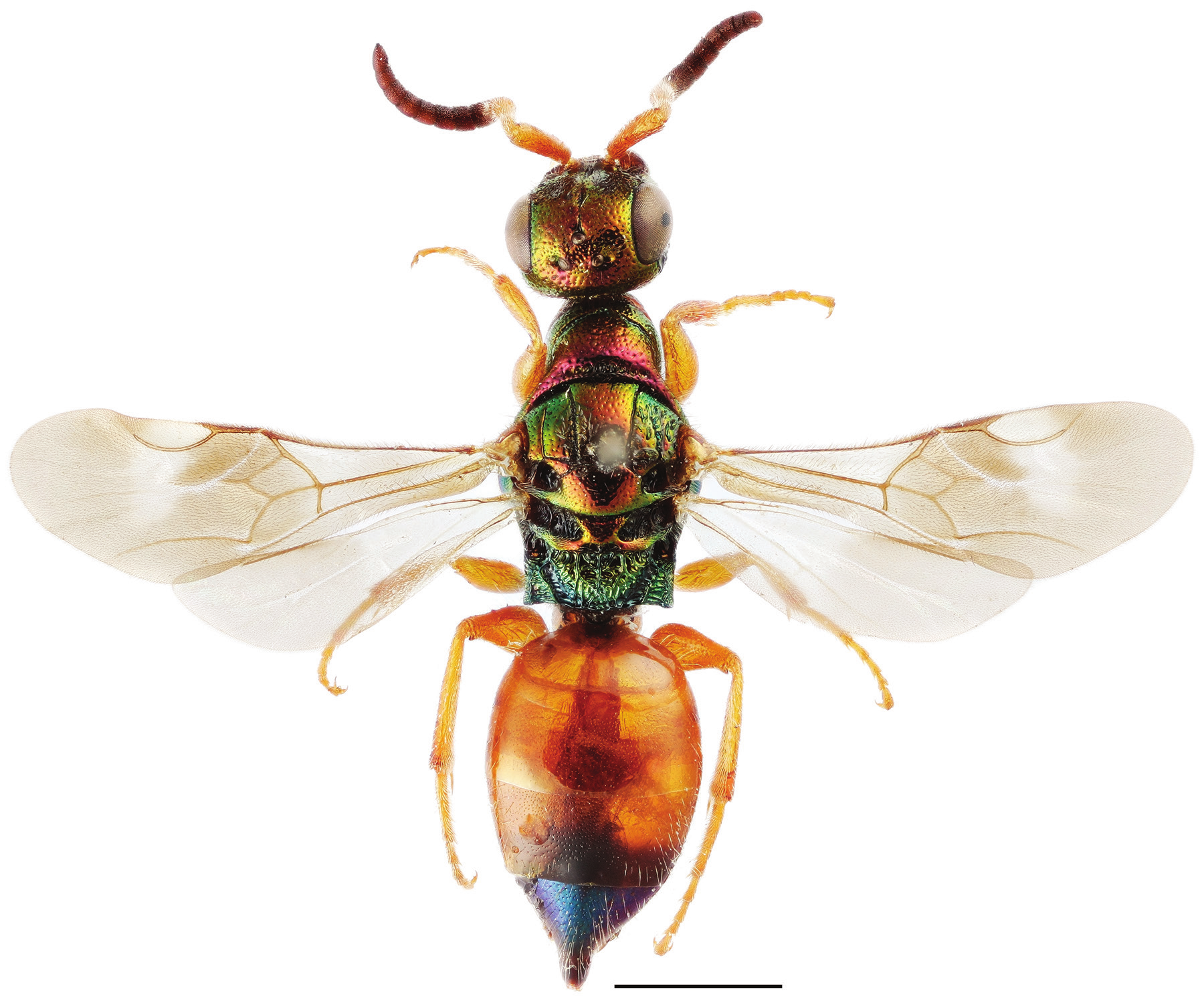Cleptinae
This subfamily represents the most basally arising lineage of Chrysididae (Kimsey and Bohart 1991, Carpenter 1999).
It is characterised by the following features: frons without scapal basin, pronotum narrowed submedially and campanulate in dorsal view (Figs 11–13), propodeum rectangular in profile, with horizontal dorsal surface, metasoma with four external segments in the female and five segments in the male (Figs 11, 16, 17), and metasomal venter convex. Cleptinae are parasitoids of sawfly prepupae (Hymenoptera: Symphyta) of the families Tenthredinidae and Diprionidae (Kimsey and Bohart 1991). The subfamily includes three genera, Cleptes Latreille, 1802, Cleptidea Mocsáry, 1904 and Lustrinia Kurian, 1955, of which only Cleptes is known from Europe (Kimsey and Bohart 1991, Móczár 1996). Currently, a total of 121 Cleptinae species are recognised worldwide (Wei et al. 2013, Arens 2014).
